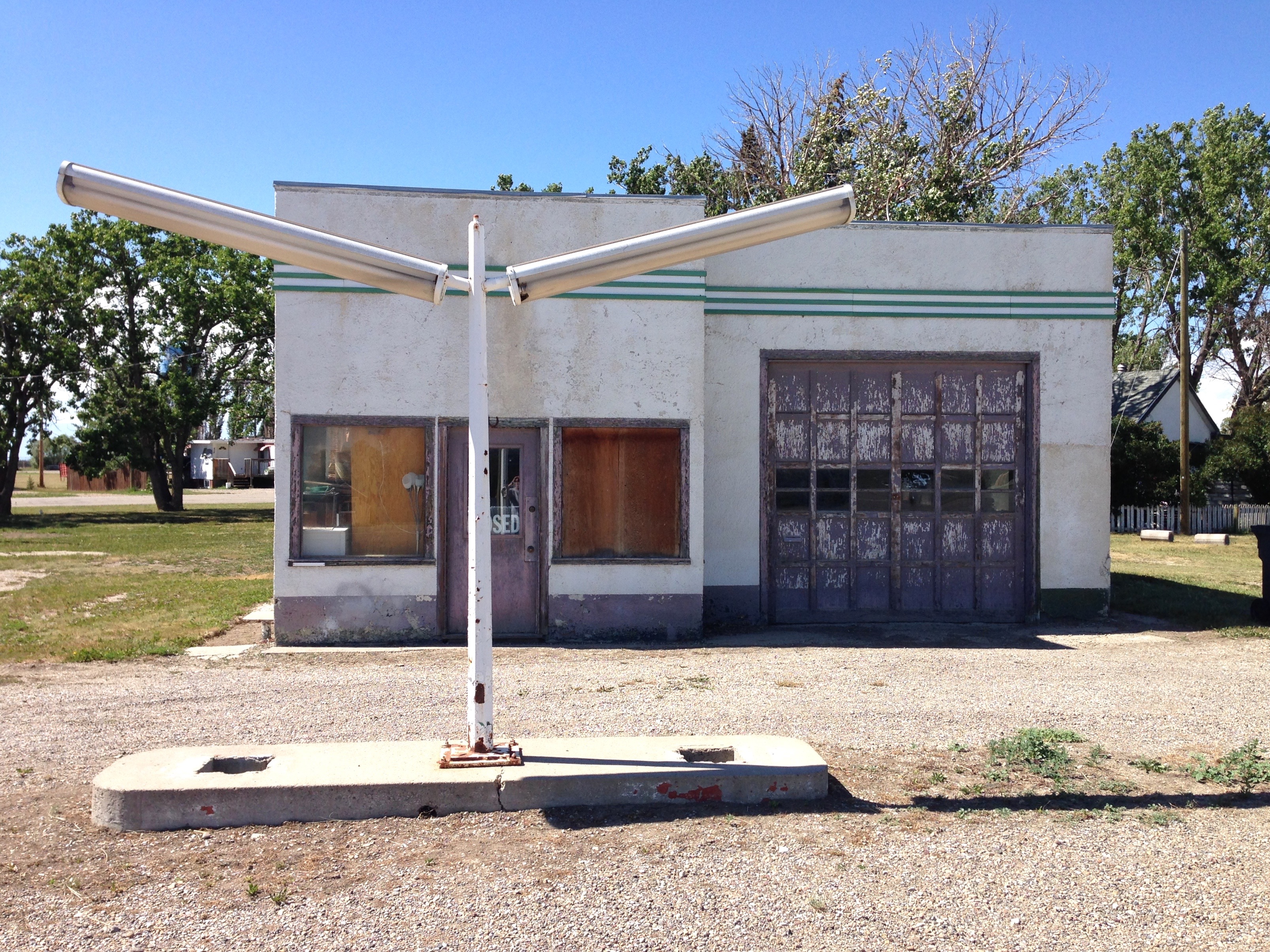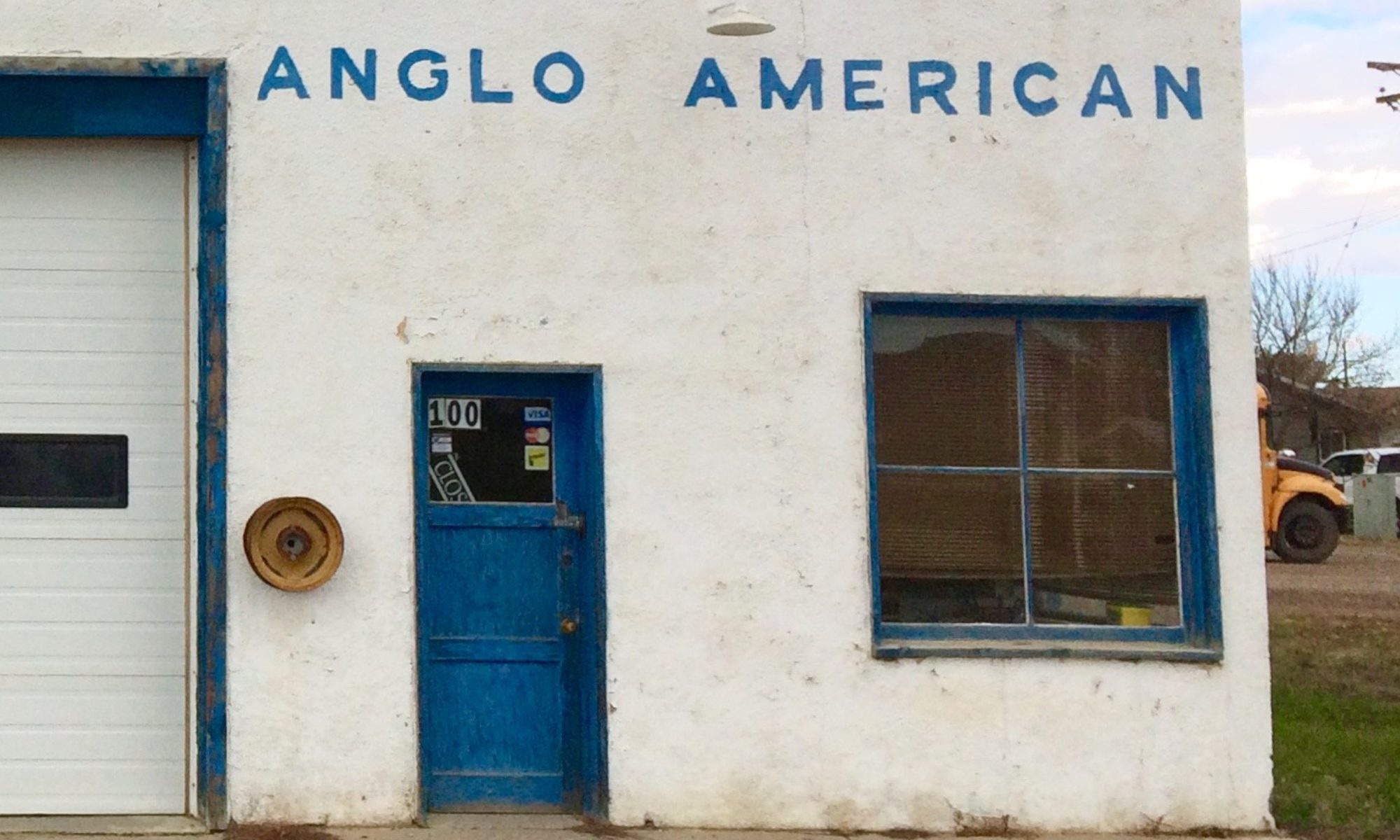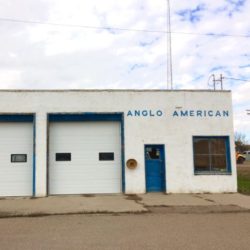
The post photo above was taken during a summer road trip in 2016. It was taken in a small town somewhere between Vulcan and Waterton National Park.
——————————
While at university I completed a research and photography project on the subject of Gas Stations. The project focused on the design progression of Irving Stations in Nova Scotia, from the 1930s, to their current models. I wrote an essay, and produced about 7 or 9 black and white photographs of local stations. The photos, I shot, printed, and mounted myself. The essay was later submitted to a academic journal, that dealt with industrial heritage architecture.
At the time of this project in the 1980’s, there was interest in re-visiting early and mid-century architecture and popular culture. Robert Venturi and his associates had, for more than a decade, been looking at suburban america’s retail and entertainment environment from an academic perspective and were broadly influential. Their approach was somewhat counter-intuitive; they looked at the commercial strip as something worthy of study, and had published a book titled ‘Learning From Las Vegas’. Their perspective was playful and celebrated the exuberance of popular low-culture commercialism. Also circulating at the time of my study, were a series industrial photographs that one would see in art magazines or museums by a german artist couple Bernd and Hilla Becher. These showed repetitively, water towers or early industrial mine hoists. While there was sufficient subtle variation amongst the photos series, the images overall presented a sense of consistency. These precedents, along with other strains in the cultural air at the time, prompted the Service Station project.
I was interested in the topic, not only as a means to record the subject matter, but also as an opportunity to look at the evolution of design. This was a modern case study, looking at a particular pervasive building type that did not exist before the 20th century. The older stations were particularly interesting. The earliest were often designed as picturesque small buildings – rustic cottage imagery, adobe forms, etc. From there, the Service Station was an early adapter to modernism in the 1930s. The functional building requirements of a gas station, found an appropriate fit with this stripped down, progressive style – a reflection of the spirit of the age.

